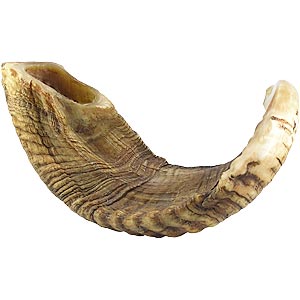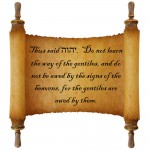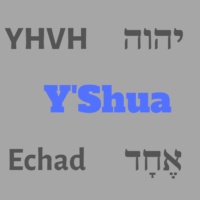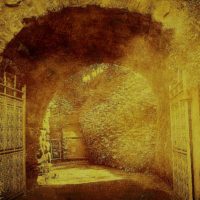
At sunset, on the first of Tishri, Yom T’ruah (Day of blowing) will start as prescribed in Leviticus:
Leviticus 23:23–25
23 Again YHVH spoke to Moses, saying, 24 “Speak to the sons of Israel, saying, ‘In the seventh month on the first of the month you shall have a rest, a reminder by blowing of trumpets, a holy convocation. 25 ‘You shall not do any laborious work, but you shall present an offering by fire to YHVH.’ â€
There are many traditions that go with this day. Some of them create confusion. The most common one is that this is the Jewish New Year. It is also referred to as Rosh Hashanna (Head of the Year). However, this designation was not applied to this feast until at least 1,500 years after the institution of the holiday. It is never known by that name in Scripture.
Rosh Hashanah, originated in a primitive culture in which magic, myth and incantation were a familiar feature of religious belief. Since early Jewish culture was within the constellation of Babylonia, which dominated the Middle-East. Babylonians considered it to be their new year and on that day there took place an awesome gathering of all their deities in the great temple of Marduk, the chief god in Babylon. They assembled there on every new year to “renew†the world and to pass judgment on human beings and then inscribed the fate of each individual for the ensuing year on a tablet of destiny.
The sages have changed the Jewish calendar so that their new year begins on this day, rather than in the month of Aviv, as YHVH instructed Yisra’el in His Torah. With this change, Yom T’ruah lost its true meaning. Through this Babylonian distortion of the truth, some of the people of Yisra’el began to be led astray. The sages also taught that this day marks the anniversary of the creation of the world and Yom T’ruah is the only feast to fall on a Rosh Chodesh (New Moon).
For believers in Y’shua haMashiach, Yom T’ruah has become a festive time which is both celebratory and prophetic, pointing to Y’shua haMashiach’s return. The purpose of this moed can also be summed up in one word “regatheringâ€. Since the fall holidays call us to regather to a pure faith in YHVH .
The prophetic theme looks for the future day when the full spiritual regathering will occur under Y’shua haMashiach. In speaking of the future regathering of believers in Y’shua haMashiach, commonly called “the raptureâ€, Paul reveals an interesting connection to the moed.
1 Thessalonians 4:16–18
16 For YHVH Himself will descend from heaven with a shout, with the voice of the archangel and with the trumpet of Elohim, and the dead in Messiah will rise first. 17 Then we who are alive and remain will be caught up together with them in the clouds to meet YHVH in the air, and so we shall always be with YHVH. 18 Therefore comfort one another with these words.
For more details please have a look at this document that we have developed to summarize information we have collected from a number of different sources.









Leave a Reply